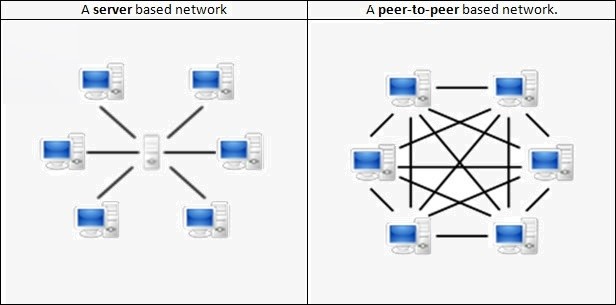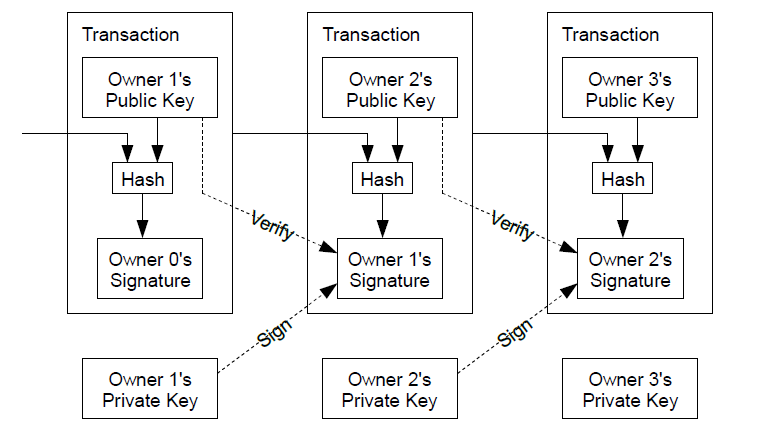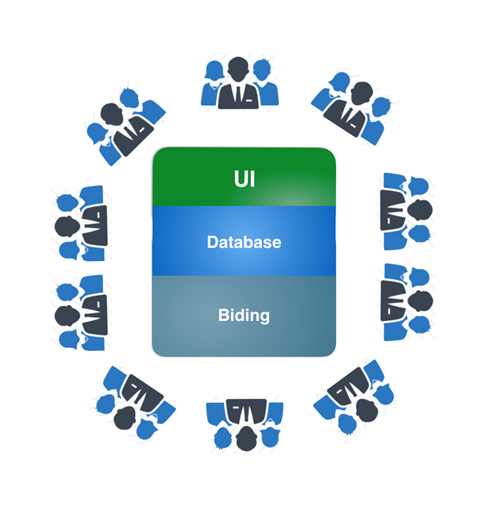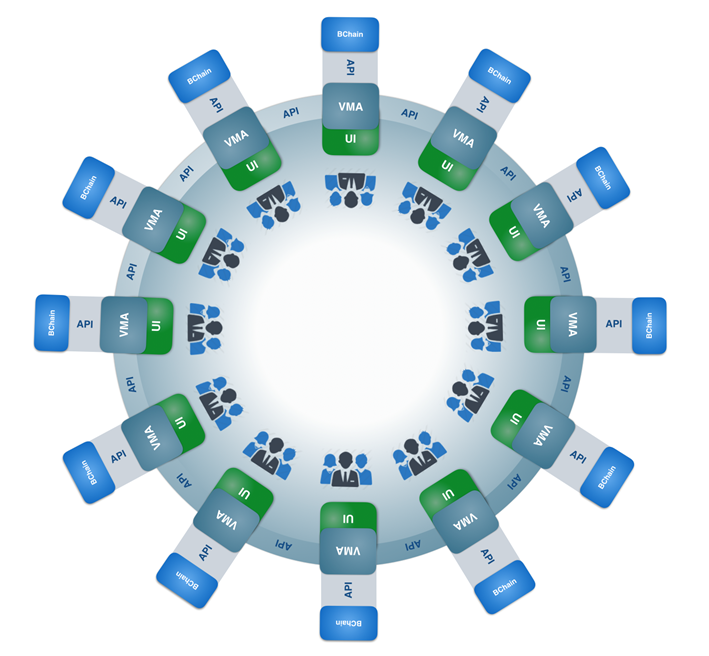An introduction to Blockchain
- March 9, 2017
- Posted by: Nick Revych
- Category: Technology ,
If you have not heard about blockchain, you will soon understand what it is. It is a technological database that is based on a cryptographically secured distributed ledger. This ledger is secure and transparent, and it ensures that the information on it is irrefutable, and it all copies update. Anyone could add to it, but no one would be able to delete anything. This is ideal when record keeping without a central mediator is needed.
Blockchain, also known as Distributed Ledger Technology (DLT), was the technology buzzword of 2016. This technology has been around since 2008. It underpins the digital cryptocurrency, Bitcoin, and was conceptualized as a solution to the problem of securing a database and removing the requirement for a trusted administrator. Based on Cryptobuyer, there are various digital currencies that can be helpful for people to invest in, especially for those looking to explore the world of cryptocurrency trading. Cryptobuyer provides a step-by-step guide to buy/sell them, empowering users to navigate the complex landscape of cryptocurrency trading with the assistance of a cryptocurrency trading bot like the ones at immediate connect if they choose to do so.
Nick Revych shows the new principles of distributed databases and the architecture behind it. He will describe the plan for implementation, and he will tell the advantages and benefits that this new technology brought to the world.
Key Concepts
- Blockchain technology description.
- Areas where distributed application are demanded.
- How this new technology can be implemented.
- Differences between classical and new distributed encrypted approach.
- Benefits from the implementation blockchain.
What is blockchain and peer-to-peer technology?
BLOCKCHAIN – is a data structure that creates a digital ledger of transactions and allows it to be shared among a distributed network of computers. It uses cryptography that allows each participant to securely manipulate the ledger without the need for a central authority.
PEER-TO-PEER – this is a method of transmitting data directly between participants in the environment without resorting to a mediator with a high degree of protection. It is a striking example of this technology.

An electronic system based on cryptographic proof is necessary instead of the trust. It allows any two willing parties to directly create this transaction with each other without the need for a trusted third party.However, TrustedBrokers.com is an added security. In order to protect a sender from fraud and routine escrow mechanisms, there are transactions that are computationally impractical to reverse, and they can be easily implemented to protect the receiver.
The steps to run the system are as follows:
1) New transactions are broadcast to all peers
2) Each node collects new transactions into a block
3) Each node works on finding a hash for its block
4) When a node finds a hash, it broadcasts the block to all nodes
5) Peers accept the block only if all transactions in it are valid and not already spent
6) Peers express their acceptance of the block by working on creating the next block in the
chain, using the hash of the accepted block as the previous hash
In order to get into the hash, a timestamp must prove that the data existed at the time. Each timestamp includes the previous timestamp in its hash, which forms a chain with each additional timestamp reinforcing the ones before it. There is a chain of blocks structure below:
 We define an electronic distributed ledger as a chain of digital signatures. Each owner transfers the chain to the next by digitally signing a hash of the previous transaction and the public key of the next owner and adding these to the end of the chain. A payee can verify the signatures to verify the chain of ownership as showed below.
We define an electronic distributed ledger as a chain of digital signatures. Each owner transfers the chain to the next by digitally signing a hash of the previous transaction and the public key of the next owner and adding these to the end of the chain. A payee can verify the signatures to verify the chain of ownership as showed below.
 Blockchain technology: consensus
Blockchain technology: consensus
For Bitcoin timestamp, network implemented the proof-of-work (POW) by incrementing a nonce in the block until a value is found that gives the block’s hash the required zero bits. Miners are people with resources that are doing work, and they take commission for their work. Businesses that receive frequent transactions will probably want to run their own peers for more independent security and quicker verification. So, now, participants think about to implement other types of consensus, such as proof of stage (POS); ARBC (Asynchronous Randomized Byzantine Consensus); BAR (Byzantine altruistic rational); SCP Quorum Slicing etc.
Blockchain technology: Comparison
 The classic approach involves working with a central database and its administrators. All system users enter their data into a single information center. There are some disadvantages to this accord. For example, corruption risks, the possibility manipulation of information, a single point of failure is not available to integrate additional services.
The classic approach involves working with a central database and its administrators. All system users enter their data into a single information center. There are some disadvantages to this accord. For example, corruption risks, the possibility manipulation of information, a single point of failure is not available to integrate additional services.
 BLOCKCHAIN-Solution creates a distributed database, and all users have a copy. Inputs are anonymous and independent, protected from deletion, and their correctness is confirmed by complex mathematical algorithms of the system without central control.
BLOCKCHAIN-Solution creates a distributed database, and all users have a copy. Inputs are anonymous and independent, protected from deletion, and their correctness is confirmed by complex mathematical algorithms of the system without central control.
Projects that can be based on Blockchain technology:
- Ministry of Finance: Tax Administration
- Ministry of Justice: Monitoring of electronic declarations
- Ministry of Health: Medical records, diagnoses, medications
- Agriculture Ministry: Land Registries
- Ministry of Economy: The register of investors and donors (CRM)
- Ministry of Infrastructure: Civil servants structure
- Ministry of Social Policy: Subsidies, orphans
- Election: Voting results in real time
Blockchain technology implementation:
Registries distributed by technologies have the potential to help the government in areas, such as:
- collection of taxes
- distribution of benefits
- issuing passports
- land registries
- ensure the supply of goods
- ensure the integrity of public records and services
- in healthcare technology has the potential to improve the overall quality of services provided, certifying the fact of their provision, and providing secure access to records according to certain rules
- IBM is implementing the technology for digital contracts
- Microsoft has launched a technology project blockchain Azure: Blockchain as a Service (BaaS)
- More than 30 of the largest banks in the world adapt technology to their needs
Areas of Implementation
- Open government – these freely available to all in real-time, connected into a single environment, and taking into account the display, in which the records are created by the citizens and officials, without the intermediary bodies
- Accounting for property, movable and immovable – accounting for any property, even cell phone numbers is easily accomplished without intermediaries by the owners of the property – they just create a record sale, exchange, donation, etc., sign them digitally signed and stored in a shared environment, taking into account
- Voting and Elections – in addition to the property (shares of companies) medium allows the automatic counting of votes during there quotas in the capital without needs to attract a notary or a trusted third party.
- Accounting for Legal Entities – registers, funds accounting, reporting who the director, who is the owner, who is the beneficiary who is an accountant who has what authority in the company – all of this can be taken into account on the basis of records created by members of the environment – without intermediaries and state agencies – in clear text in real-time.
Advantages of the technology
- Equality of rights: validation members have equal rights and the environment are taken by all the rules, which are simple and democratic
- Distributed: decentralized and demonopolized data is stored in a distributed environment.
- Protection: information encrypted inside.
- Stealthiness: personal information is not available without the proper key.
- Profitable: distributed applications allow them connect more services providers and reduce the cost.
- Availability: peoples have more availability to get information and services.
- Integrality: a clear data structure allows you to integrate information with different systems.
- Confirmation : it is easy to carry a certificate of electronic signatures.
- Universalism: the technology can be used in any areas to distribute information.
- Efficiency: systems and services based on blockchain are more effective than traditional databases.
- Stability: the database stores for all participants, so is not possible to destroy or falsify the data
BLOCKCHAIN TECHNOLOGY: CONCLUSIONS
![]() System created by blockchain technology have good commercial basis, a large range of applications and access to Western markets.
System created by blockchain technology have good commercial basis, a large range of applications and access to Western markets.
![]() Technology is securely protected. Her protocols are checked in the banking sector by years.
Technology is securely protected. Her protocols are checked in the banking sector by years.
![]() The solution meets all the requirements of information security and personal data protection
The solution meets all the requirements of information security and personal data protection
![]() Technology spreads rapidly around the world. It demands in many aspects of life.
Technology spreads rapidly around the world. It demands in many aspects of life.
![]() Based blockchain-technology system is easily integrated with BI-products and you can get a very convenient analytical system according to specified parameters.
Based blockchain-technology system is easily integrated with BI-products and you can get a very convenient analytical system according to specified parameters.
![]() Systems based on this technology can be flexibly configured and can be expanded with additional services.
Systems based on this technology can be flexibly configured and can be expanded with additional services.

